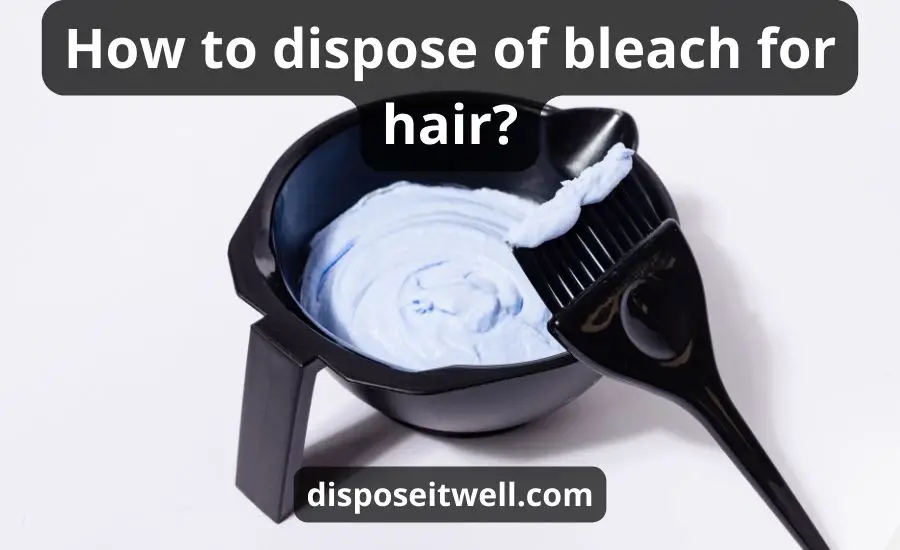How to dispose of bleach for hair? If you’re someone who loves experimenting with hair colors, you’re likely no stranger to bleach.
In this article, we will explore the responsible and eco-friendly ways to handle and dispose of bleach for hair, ensuring not only stunning hair transformations but also a commitment to environmental consciousness and personal safety.

How to dispose of extra hair dye?
Disposing of extra hair dye properly is essential to minimize environmental impact and ensure your safety.
Hair dye contains chemicals that can be harmful if not handled and disposed of correctly.
If you have no plans to use the dye again, and there are no options for donation, contact your local hazardous waste facility to inquire about proper disposal.
Waste facility workers play a crucial role in ensuring that hazardous materials are safely dispose of.
Various ways to dispose of hair bleach
When it comes to disposing of hair bleach, it’s crucial to handle it with care due to its potentially harmful chemicals.
It often contains strong agents like hydrogen peroxide and ammonia, which can be harmful to both people and the environment.
The first step in disposal is to check the product’s label and instructions. Many manufacturers guide how to safely dispose of their hair bleach products.

It’s essential to follow the instructions carefully when learning how to pour hair bleach to ensure an even application without damaging your hair.
Proper disposal methods for leftover hair bleach should always be considered to prevent environmental contamination.
One of the most efficient ways to dispose of hair bleach is to use it all up during your hair treatment.
Mixing the exact amount needed can help minimize waste and ensure that there’s nothing left to dispose of. Avoid overmixing or preparing more bleach than necessary.
If you have leftover hair bleach and it’s not possible to use it all, the safest option is to contact your local hazardous waste facility.
They can guide how to properly dispose of the bleach according to local regulations. Hair bleach is often considered a hazardous chemical and should be treated as such.
Never mix hair bleach with other household chemicals or cleaning agents. This can lead to dangerous chemical reactions. If you need to dispose of bleach, do so separately from other waste materials.
What to do with leftover hair bleach?
Leftover hair bleach can be a bit of a conundrum, especially if you have a significant amount left in the bottle after completing your coloring project.
If you enjoy experimenting with your hair color, you can use leftover dyes to create custom shades.
Mixing different colors can result in unique and personalized hair colors that suit your style and preferences.
Leftover hair bleach can be used in various art and craft projects. Its vibrant colors can be employed for painting, tie-dyeing fabrics, or creating unique designs on clothing and accessories.
Many salons and beauty schools accept hair bleach donations for educational purposes, helping students learn how to handle excess bleach safely.
If you have high-quality and unopened hair dye that you no longer need, consider selling it online through platforms like eBay or beauty product marketplaces. Many people look for discounted, unused dye products.
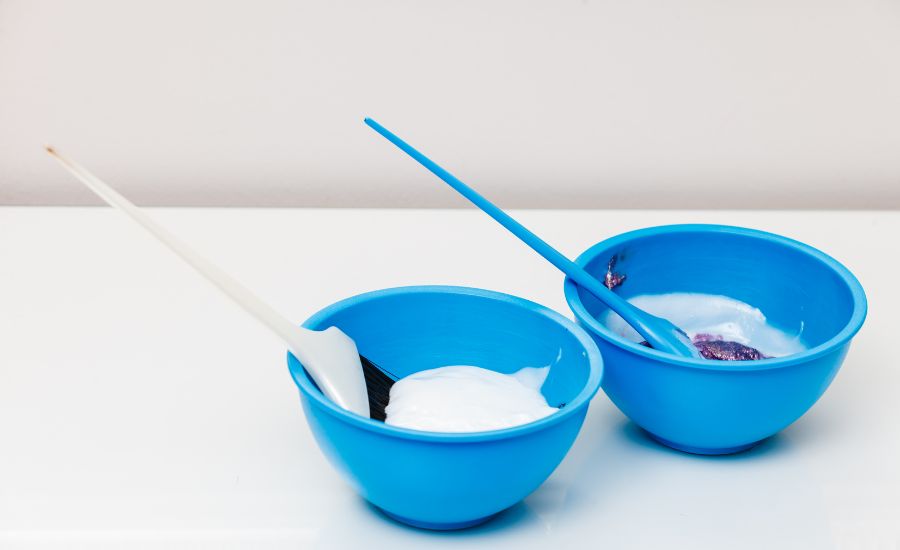
How long is hair bleach good for?
The bleach age can vary depending on several factors, including the type of bleaches, its ingredients, and how it’s stored.
Unopened Hair Bleach
Unopened hair bleach typically has a longer shelf life compared to opened containers. Most manufacturers indicate an expiration date of 1 to 2 years for unopened bleach.
It’s important to check the expiration date printed on the packaging and use it before that date for optimal results.
Opened Hair Bleach
Once you’ve opened a container of hair bleach, its shelf life may be shorter, usually around 6 to 12 months. The leftover hair dye can gradually lose its potency and effectiveness over time due to exposure to air and light.
Powder vs cream bleach
Powder and cream hair bleaches may have slightly different shelf lives. Powder bleach typically has a longer shelf life because it is more stable when stored correctly.
Cream bleach may have a shorter expiration date, so it’s important to use it within the recommended timeframe.
Proper storage is crucial for extending the shelf life of hair bleach. Store it in a cool, dry place away from direct sunlight and extreme temperatures. Keep the container tightly sealed to prevent air and moisture from affecting the bleach’s potency.
Before using hair bleach, especially if it has been stored for a while, it’s essential to perform a patch test.
This involves mixing a small amount of bleach and developer and applying it to a small, inconspicuous area of your skin.
If you experience any adverse reactions, such as irritation or burning, the bleach may have gone bad and should not be used.
Using expired hair bleach can result in uneven or undesirable results, as the bleach may not lift the hair properly or could cause damage.
Is hair bleach toxic?
Hair bleach relies on powerful chemical reactions to remove the natural pigments from hair. These hazardous chemicals, especially ammonia and hydrogen peroxide, can be corrosive and irritating to the skin, eyes, and respiratory system.
Direct contact with bleach can cause skin irritation, redness, itching, and even chemical burns.
If bleach comes into contact with the eyes, it can lead to severe irritation, redness, and, in some cases, permanent eye damage.
Some individuals may be allergic to the chemicals in hair bleach, leading to more severe skin reactions, such as hives, swelling, and blistering.
The chemicals in hair bleach can be harmful to the environment if not disposed of properly. They can contaminate water sources and harm aquatic life, disrupting ecosystems.
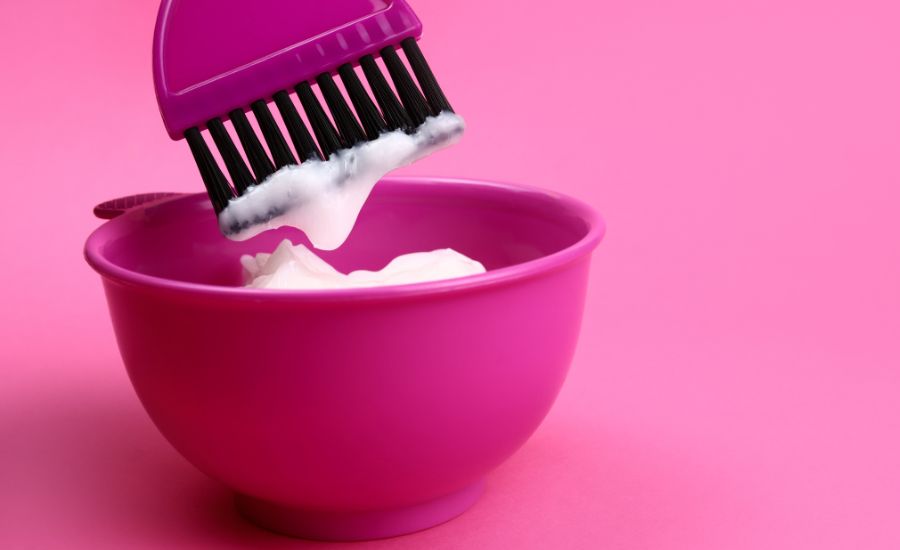
Hair bleach with harmful chemicals
Hair bleach is a powerful product that lightens or removes the natural pigment from hair.
While it can achieve stunning results, it often contains a combination of hazardous chemicals that can be harmful to both your hair and overall health if used improperly or excessively.
There are many hydrogen peroxide-based hair bleach products. It helps break down the natural melanin in hair, allowing it to become lighter.
However, hydrogen peroxide can be harsh on the hair and scalp, leading to dryness, brittleness, and potential hair damage if overused.
Some hair bleach formulations may contain parabens as preservatives. Parabens have been a subject of concern due to their potential links to endocrine disruption.
Hair bleach products often include fragrances and dyes to improve their scent and appearance. These additives can sometimes cause skin irritation or allergic reactions in individuals with sensitivities.
Resorcinol is another chemical found in some hair bleach products. It helps to activate and stabilize the bleaching process.
Hair bleach PPD-free products may still contain other ingredients that could potentially cause skin or scalp reactions.
How to use hair dyes safely?
To minimize the potential harm from hair bleach, consider the following precautions:
- Always follow the manufacturer’s instructions and recommended processing times.
- Conduct a patch test before using any bleach product to check for skin allergies or sensitivities.
- Use bleach in a well-ventilated area to reduce inhalation exposure.
- Avoid overusing bleach or applying it too frequently to prevent excessive damage to your hair.
- Consider seeking the services of a professional stylist for complex or high-risk bleaching processes.
- Use Hair bleach age-restricted due to the potentially harmful chemicals it contains.
Ultimately, while hair bleach can be a useful tool for achieving your desired hair color, it’s crucial to be aware of the chemicals it contains and to use it responsibly to minimize potential harm.
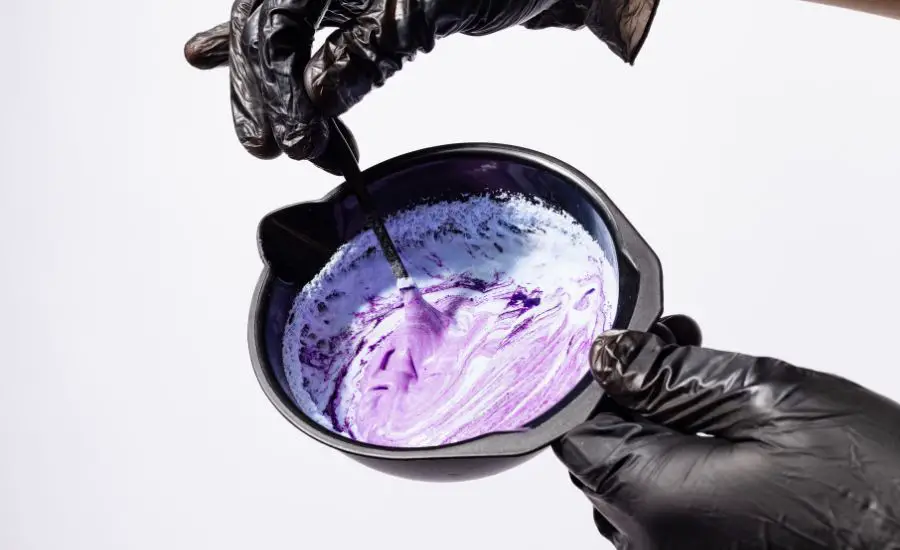
What is the natural way to deal with hair bleach?
Hair bleach, with its hazardous chemicals, can be harsh on your hair and scalp. If you’ve used bleach and want to minimize damage or if you’re looking for natural ways to deal with the after-effects of bleaching, here are some tips:
One of the most effective natural hair dye is through deep conditioning treatments. Use natural ingredients like coconut oil, olive oil, or shea butter to moisturize and repair your hair. Apply the chosen oil to your hair, cover it with a shower cap, and leave it on for several hours or overnight before rinsing.
Bleaching can strip your hair of protein, leading to weakness and breakage. Look for natural protein treatments or DIY options using ingredients like egg whites or yogurt to help strengthen your hair.
Opt for sulfate-free and paraben-free shampoos and conditioners. Natural and organic products are generally gentler on bleached hair and less likely to strip away essential oils.
Schedule regular trims to remove split ends and prevent further damage from traveling up the hair shaft.
Allow your hair to air dry instead of using a blow dryer. If you must blow dry, use the lowest heat setting and a diffuser attachment.
Best vegan hair bleach
If you’re looking for a vegan hair bleach option, you’ll be pleased to know that there are cruelty-free and plant-based alternatives.
Manic Panic is a well-known vegan and cruelty-free hair color brand. Their Flash Lightning Hair Bleach Kit comes with everything you need to bleach your hair, including bleach powder, developer, mixing tub, and gloves. It’s a popular choice among those seeking vibrant hair colors.
Punky Colour offers a vegan-friendly bleach kit that not only lightens your hair but also helps remove unwanted color.
This kit includes bleach powder, a developer, a mixing tub, and an anti-brass toner to achieve a clean, even result.
Joico’s Blonde Life Creme Lightener is a vegan and cruelty-free option that is gentle on the hair while delivering effective lighting results. It contains a patented bond-building technology to help maintain the hair’s integrity.
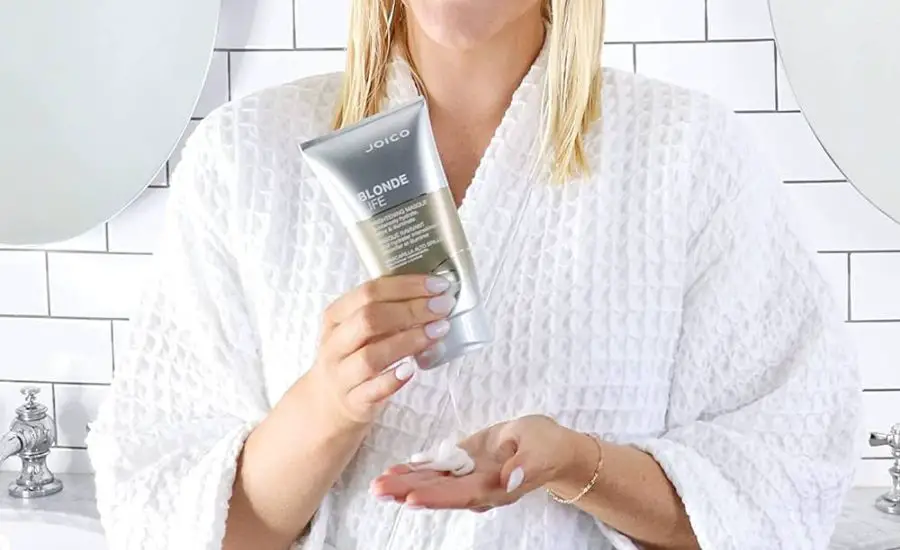
FAQs: How to dispose of bleach for hair?
Let me answer the most important questions that readers most often ask me. I will be happy to answer your questions if you ask me them in the comments.
Can you put hair dye down the sink?
No, it’s not recommended to put hair dyes down the sink as they can contain chemicals that are harmful to the environment and may clog your plumbing. Instead, it’s best to dispose of hair dye following local hazardous waste guidelines or recommendations to ensure safe and responsible disposal.
Pouring hair dye down the sink can lead to plumbing issues and may introduce chemicals into the water supply, which can be detrimental to aquatic ecosystems and the environment.
What can I do with unused hair dye?
It can be stored for future use if it’s within its shelf life. Alternatively, you can donate it to friends or family, sell it online, or consider repurposing it for art and craft projects.
How do you store excess hair bleach?
To store excess hair bleach, keep it in its original container, tightly sealed, and store it in a cool, dry place away from direct sunlight. This helps maintain its potency and shelf life.
How do you dispose of hair waste?
Dispose of hair waste, such as cut hair, by placing it in a compost bin if it’s natural hair. If it contains other chemicals, like hair bleaches, it should be disposed of according to local hazardous waste regulations or guidelines.
Conclusion
In conclusion, handling leftover hair bleach responsibly is crucial to protect both our health and the environment. Pouring hair bleach down the drain or disposing of it with regular household waste can introduce hazardous chemicals into our water systems and ecosystems.
Whether we are bleaching hair or dealing with other chemicals, it’s essential to follow local guidelines and use proper channels to dispose of hair bleach as hazardous waste. By doing so, we can contribute to a safer and more sustainable approach to hair care and protect the world around us.
My name is Ella Vicedomine and I’m the founder of this blog. The aim is to start this informational blog to guide people on how to dispose of waste things around in the house but in the right way.

